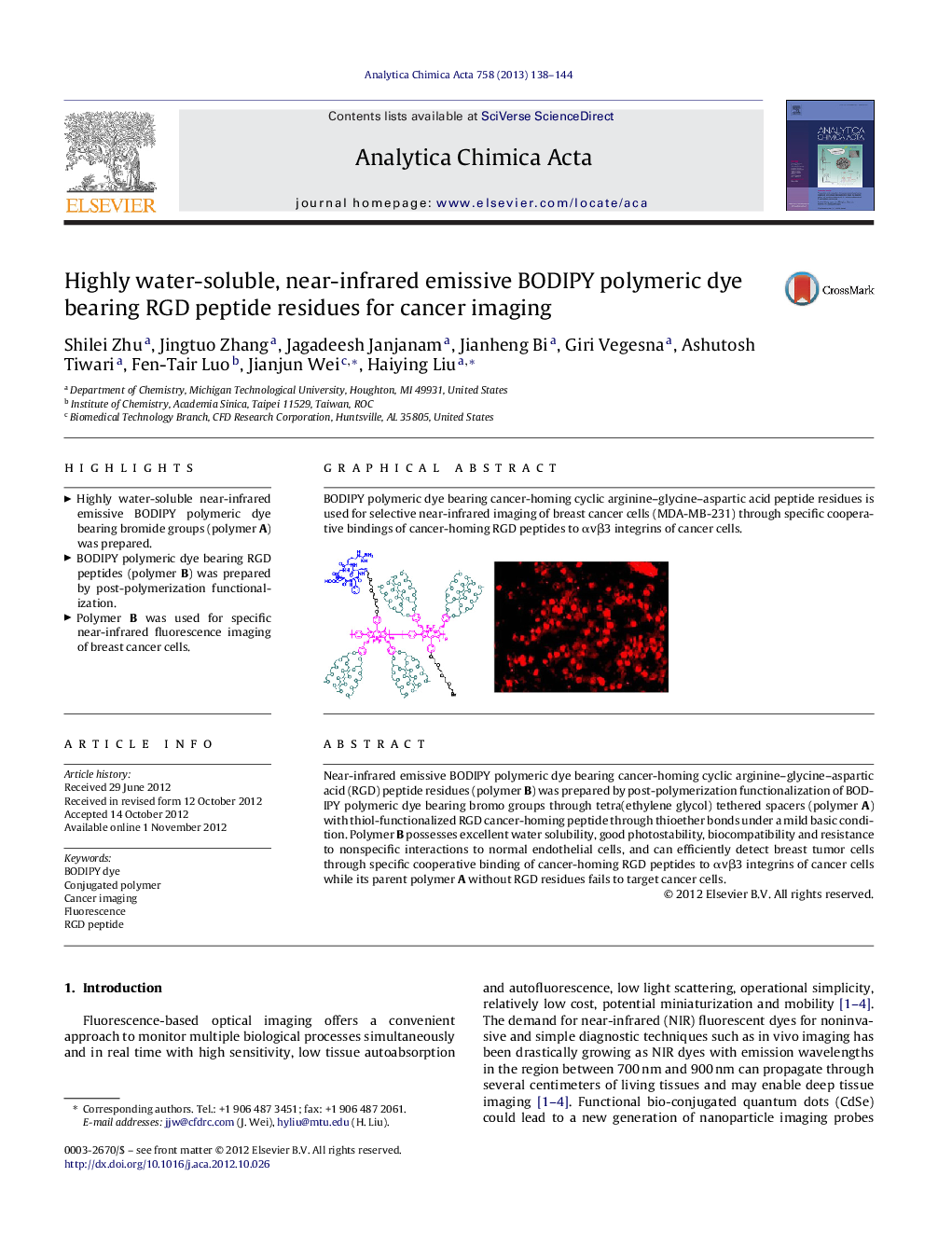| Article ID | Journal | Published Year | Pages | File Type |
|---|---|---|---|---|
| 1165645 | Analytica Chimica Acta | 2013 | 7 Pages |
Near-infrared emissive BODIPY polymeric dye bearing cancer-homing cyclic arginine–glycine–aspartic acid (RGD) peptide residues (polymer B) was prepared by post-polymerization functionalization of BODIPY polymeric dye bearing bromo groups through tetra(ethylene glycol) tethered spacers (polymer A) with thiol-functionalized RGD cancer-homing peptide through thioether bonds under a mild basic condition. Polymer B possesses excellent water solubility, good photostability, biocompatibility and resistance to nonspecific interactions to normal endothelial cells, and can efficiently detect breast tumor cells through specific cooperative binding of cancer-homing RGD peptides to αvβ3 integrins of cancer cells while its parent polymer A without RGD residues fails to target cancer cells.
Graphical abstractBODIPY polymeric dye bearing cancer-homing cyclic arginine–glycine–aspartic acid peptide residues is used for selective near-infrared imaging of breast cancer cells (MDA-MB-231) through specific cooperative bindings of cancer-homing RGD peptides to αvβ3 integrins of cancer cells.Figure optionsDownload full-size imageDownload as PowerPoint slideHighlights► Highly water-soluble near-infrared emissive BODIPY polymeric dye bearing bromide groups (polymer A) was prepared. ► BODIPY polymeric dye bearing RGD peptides (polymer B) was prepared by post-polymerization functionalization. ► Polymer B was used for specific near-infrared fluorescence imaging of breast cancer cells.
